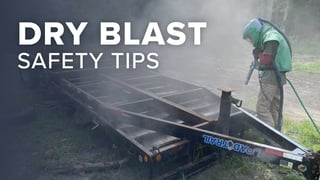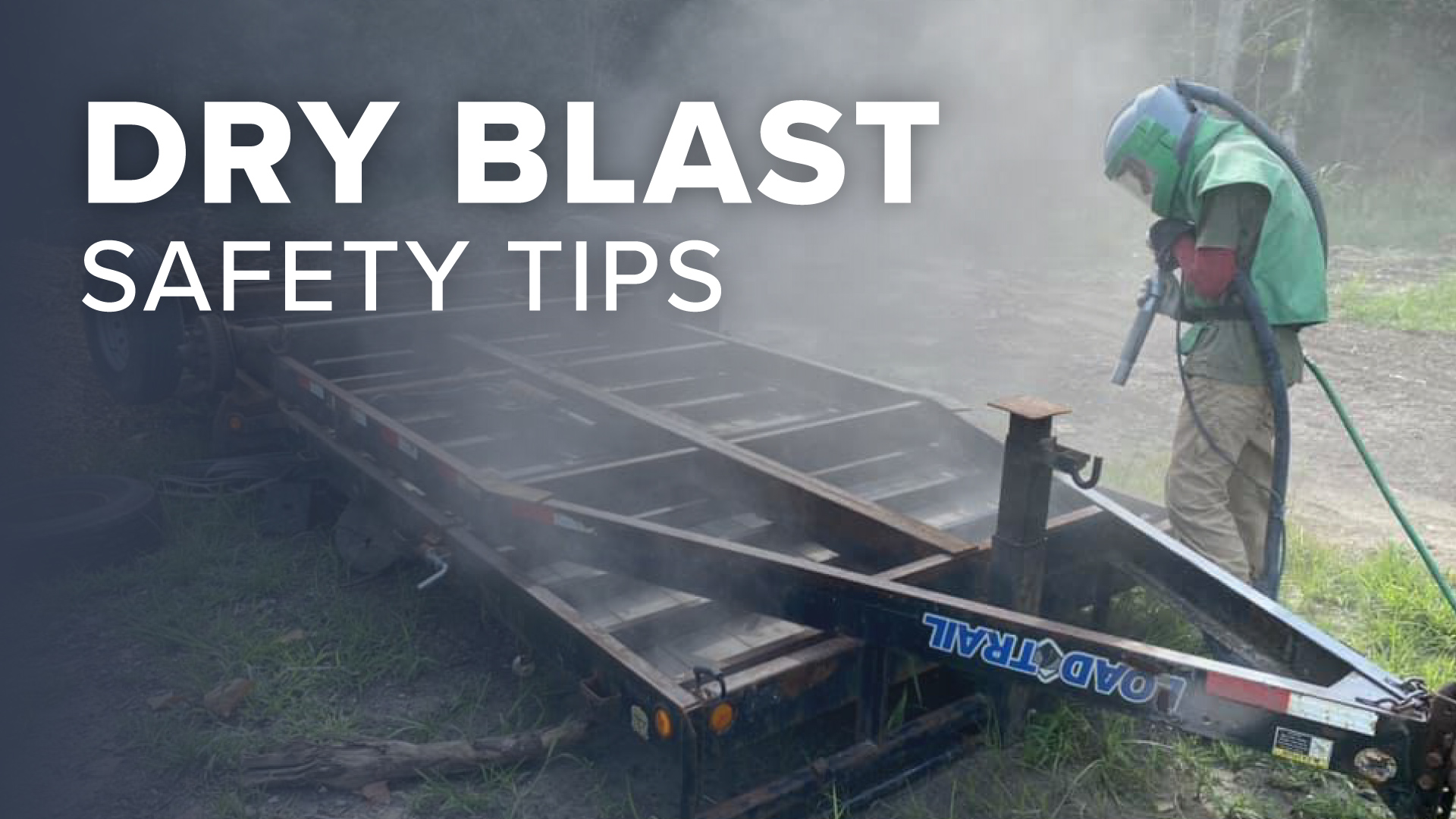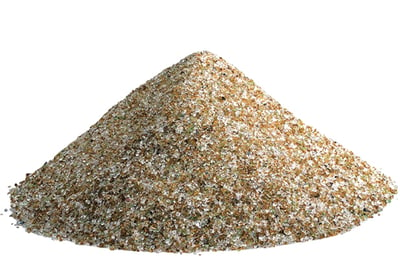

Your Dustless Blasting® machine is capable of both wet (Dustless) and dry blasting, making it the most versatile tool on the market.
When could you use dry blasting?
While wet blasting is preferred for its dust suppression and lower media consumption, there are some occasions where dry blasting is appropriate, such as:
- When you use an abrasive that floats in water (e.g. plastic bead, walnut shell, or corn cob)
- When you use an abrasive that is water soluble (e.g. soda)
- When freezing temperatures prohibit wet blasting
When dry blasting, there are extra precautions that you must take to protect yourself, your surroundings, and those around you. Here's what to do:
1.) Always wear a supplied air respirator.
According to OSHA, "a Type CE NIOSH-certified blasting airline respirator with positive pressure blasting helmet" must be worn during dry blasting operations.
We recommend the RPB® Nova 3®, which complies with this OSHA guideline, and even goes above and beyond by providing superior comfort. It includes:
- Built-in climate control
- Adjustable padding which reduced ambient noise by 78 dB
- Tear-off lenses for superior visibility
Read more: Personal Climate Control is a GAME CHANGER for Abrasive Blasters
2.) Use more containment.
Because dry blasting creates a much larger dust plume than wet blasting, extra containment measures are needed. Read the article on Containment and Cleanup Tips for ideas.
3.) Be aware of OSHA guidelines involving silica.
As an abrasive blasting media, sand has been banned in many areas. This is because it contains crystalline silica. When inhaled during blasting, it can cause silicosis, a condition characterized by scarring and damage to the lung tissue.
To protect against this health risk, OSHA recommends "replacing crystalline silica materials with safer substitutes, whenever possible." (source)

We always recommend using 40/70 recycled crushed glass instead of sand, because it contains less than 1% free silica and therefore complies with the OSHA recommendation. The dustier the environment, the higher the risk of inhalation, so this becomes especially important during dry blasting.
Read more: The Dangers of Silicosis: How Dustless Blasting® helps you stay safe and OSHA compliant
Is wet blasting better than dry blasting?
Neither wet blasting nor dry blasting are necessarily superior to the other. They are just two different processes, and each has their place.
Use wet blasting...
- in residential areas, where dust suppression is crucial.
- in areas with strict environmental regulations (such as near a body of water).
- when blasting powder coating, because the water cools the powder coating, letting it flake off instead of melting.
- when blasting concrete, because the concrete itself can release crystalline silica into the air during blasting, which must be suppressed.
Use dry blasting...
- when blasting car interiors, because dry media is easier to clean from the nooks and crannies.
- when using organic media, such as walnut, corn cob, and most baking soda.
- when freezing weather makes wet blasting impossible.
Luckily, since it's easy to switch between the two, you can always pick the kind of blasting most appropriate for the job.

